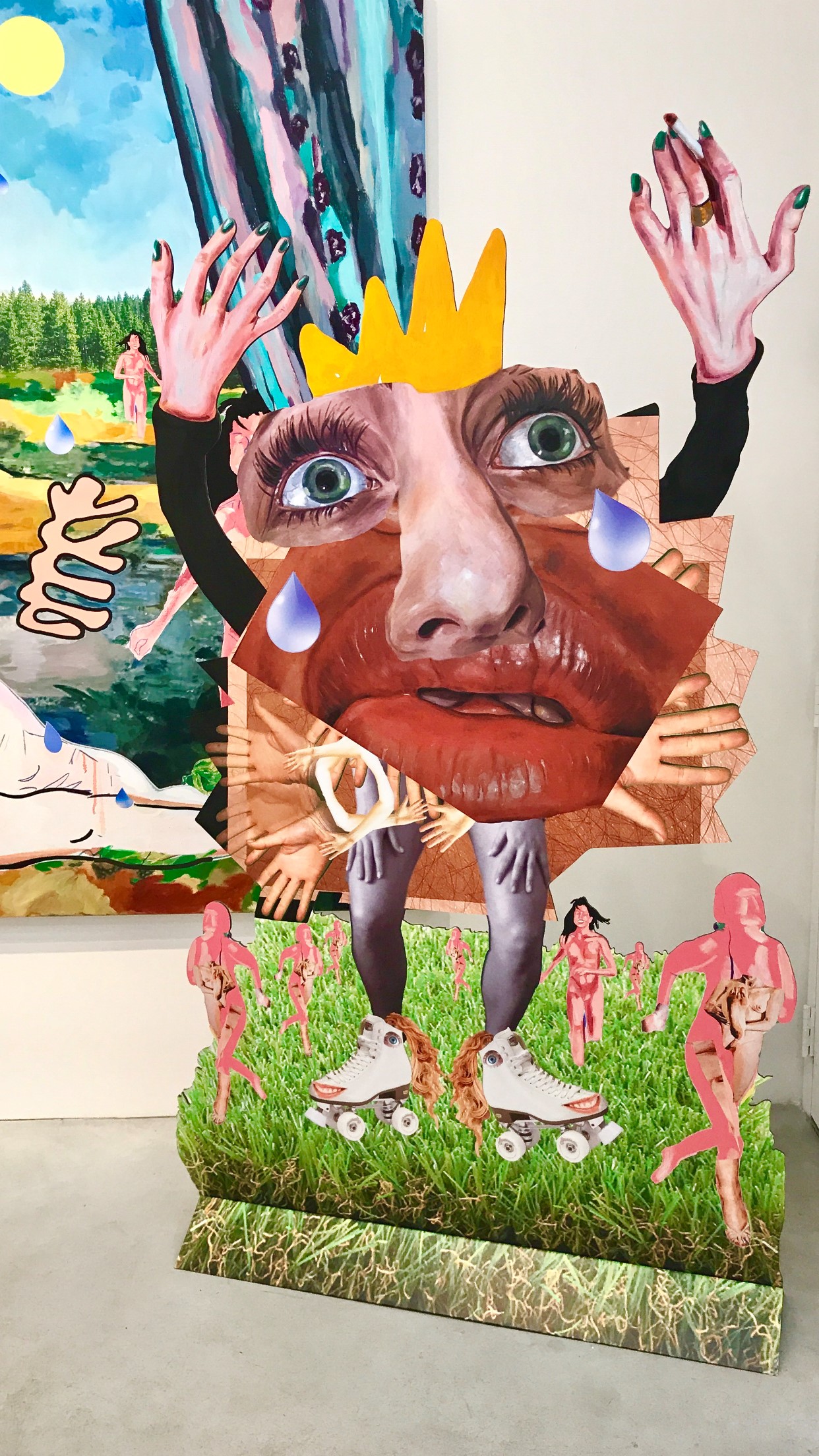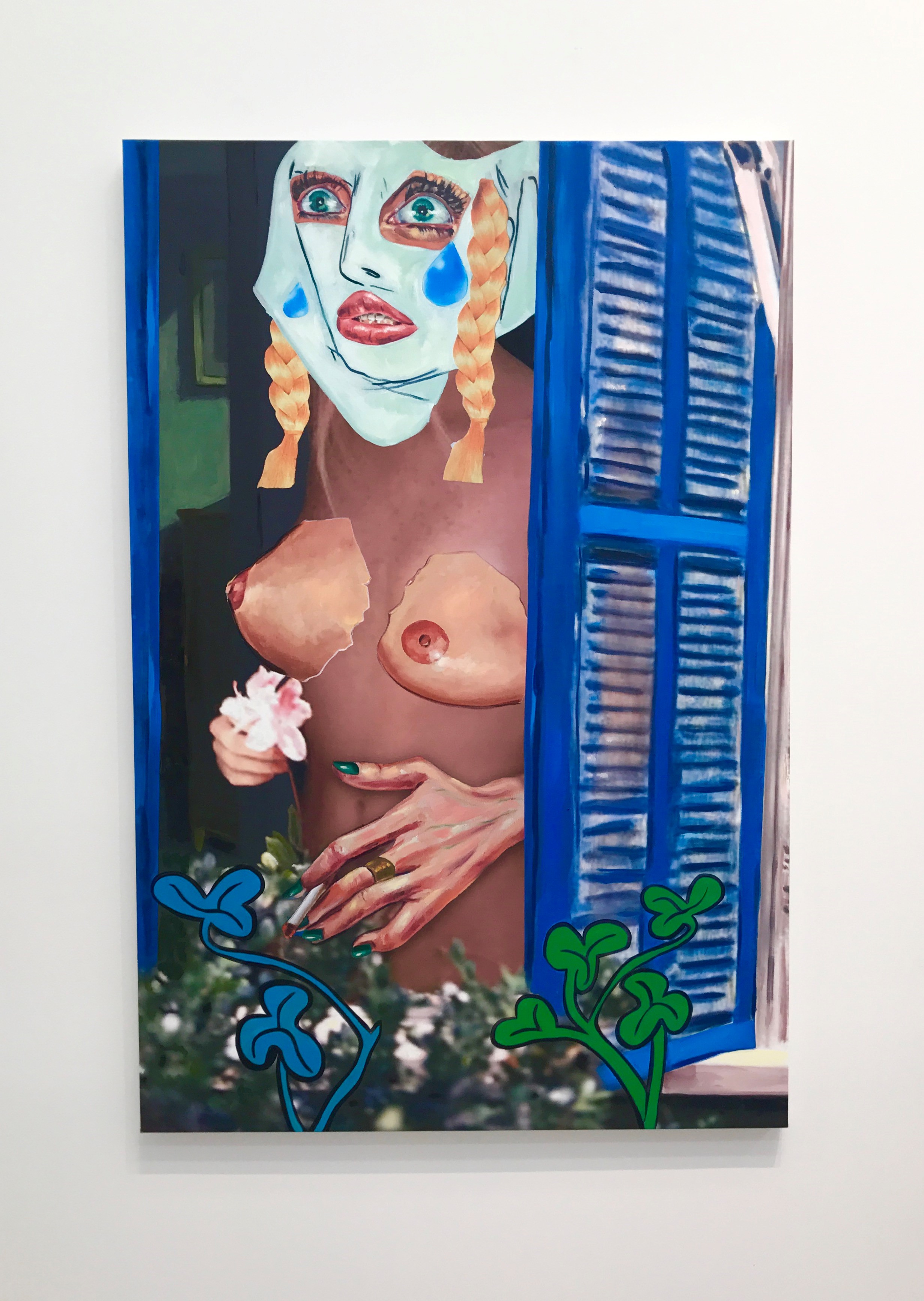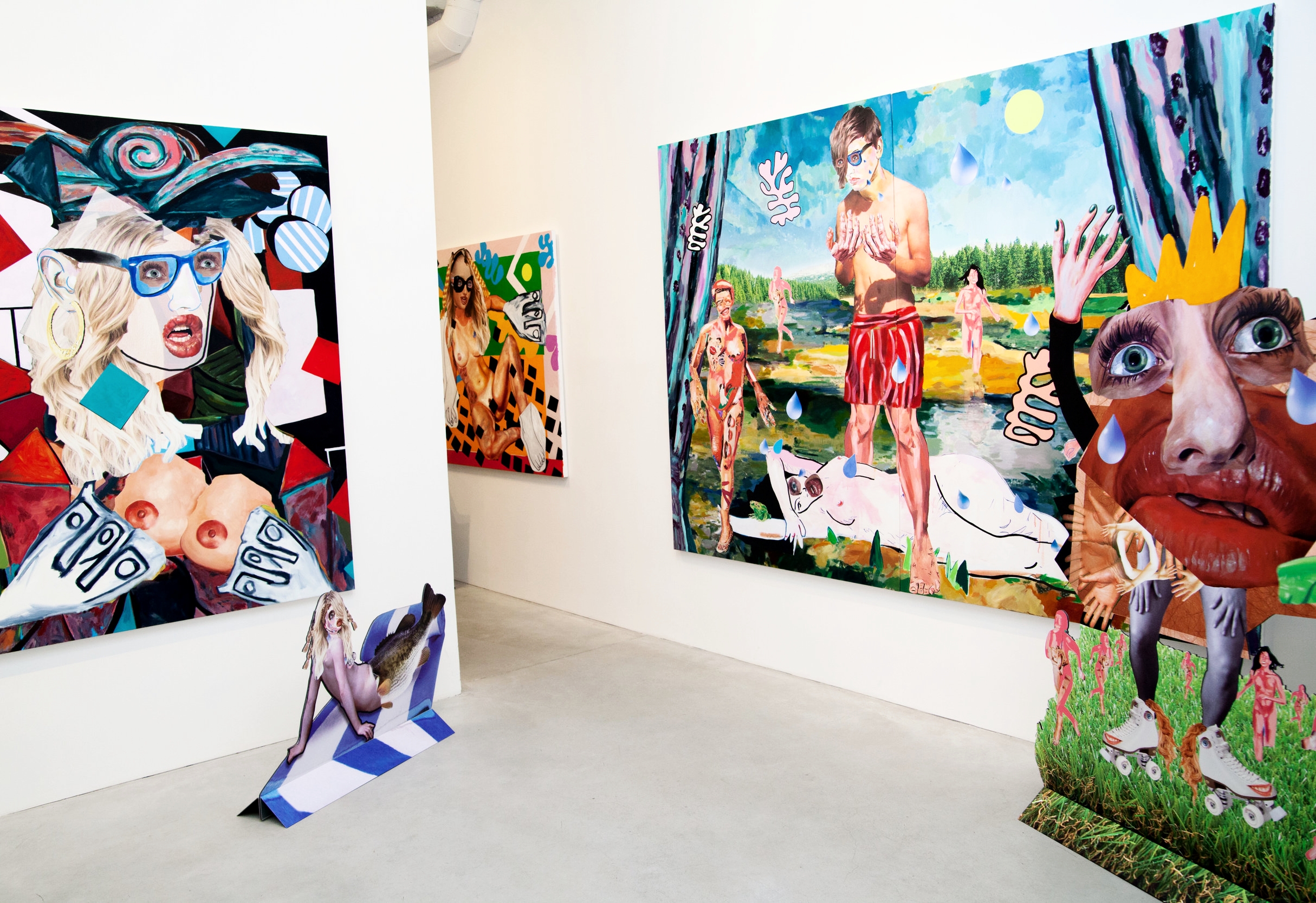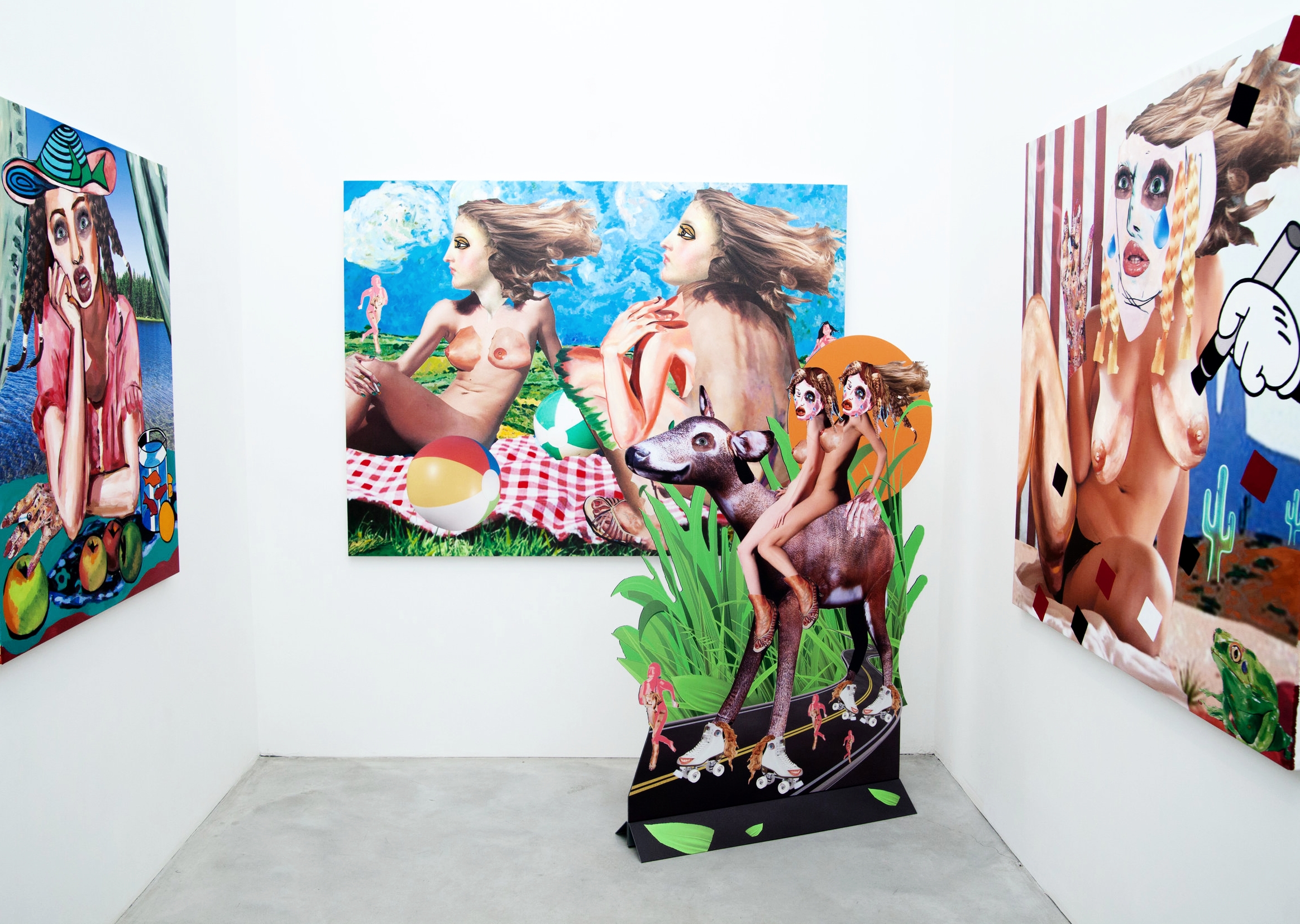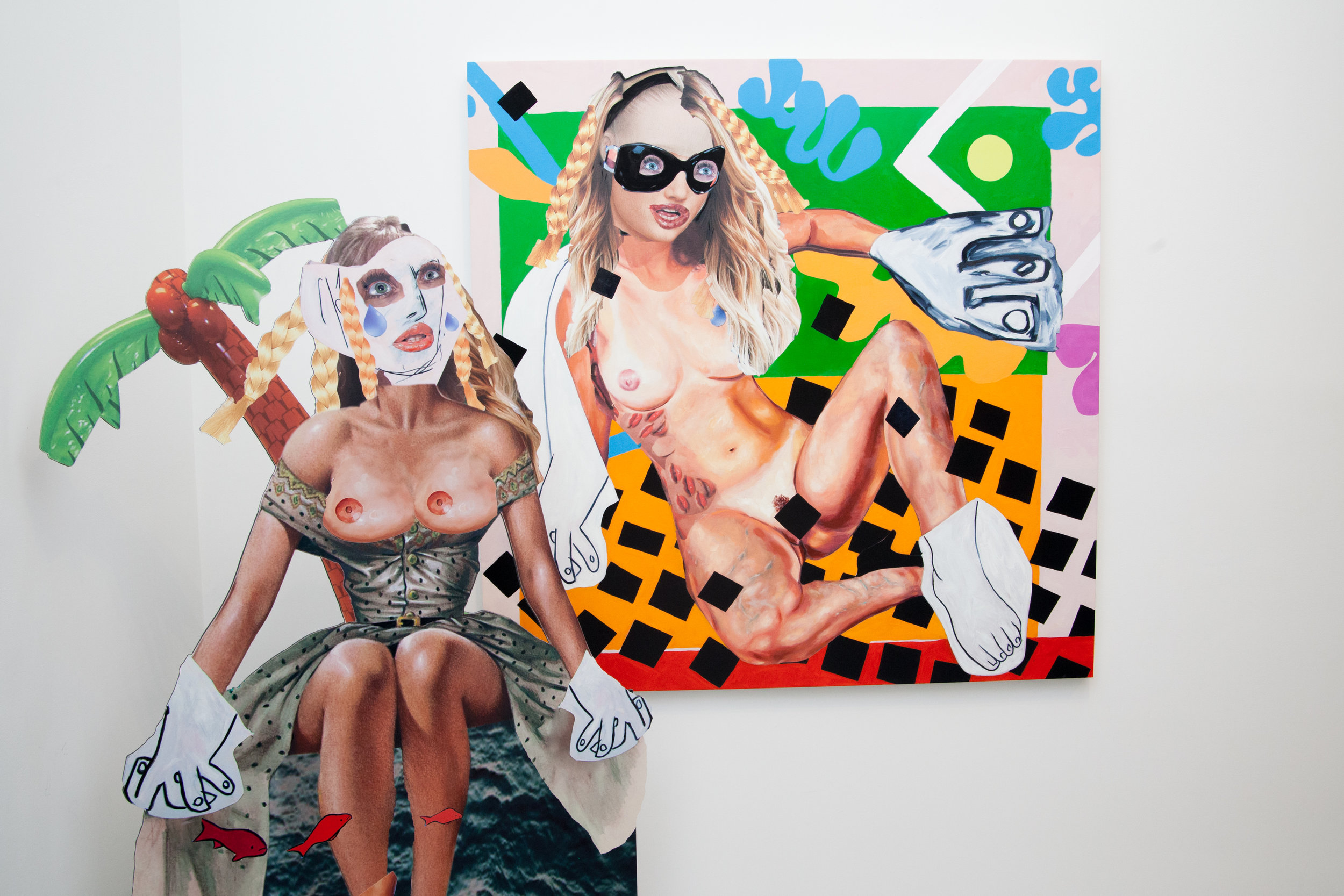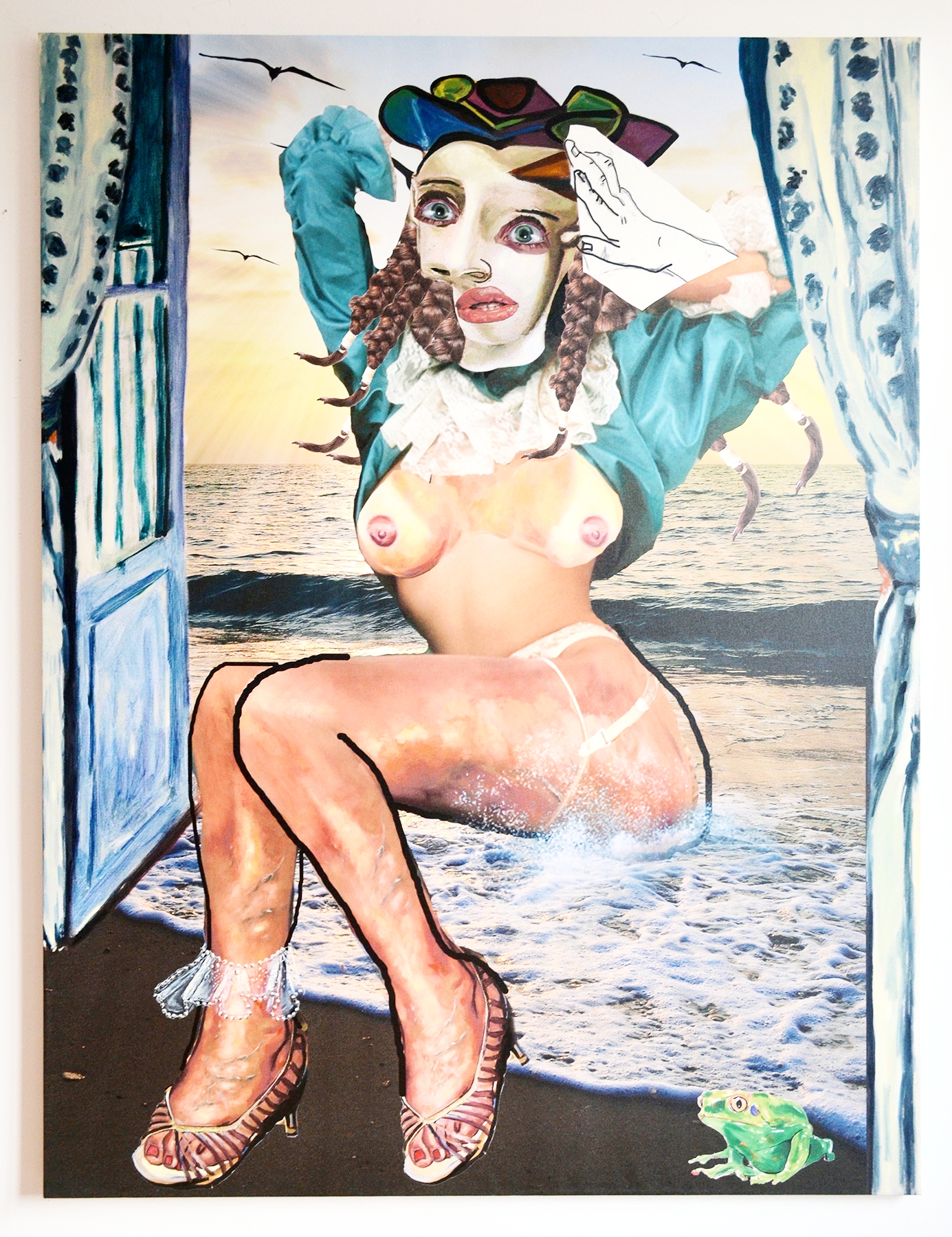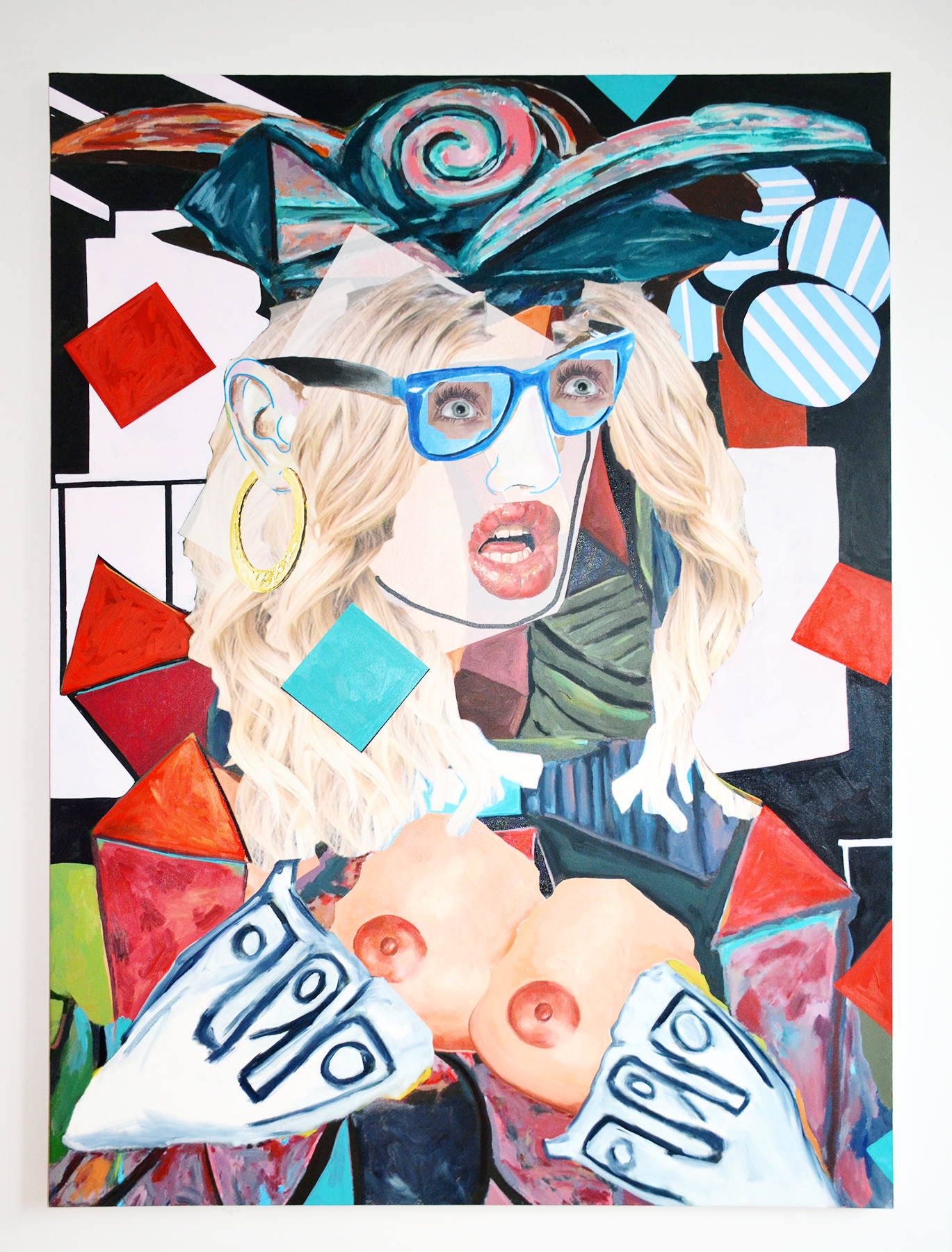Allison Zuckerman's Seductive, Grotesque, Theatrical, Paintings
The communion between an artist and their work is a sacred one, even for the cynics who pretend they can create in a vacuum. But in Allison Zuckerman's case it's not even a discussion, as she has proudly inserted herself and snippets of her life into her brilliant, intense, funny, and tumultuous canvases and sculptures, combining tradition and art history with advanced digital printing techniques - truly embodying life as we know it in 2017.
I met Zuckerman the day before the opening of her first solo show in New York City, at Kravets Wehby Gallery, and saw the space transformed into a field full of aluminum cut-out floor sculptures with medium and large paintings on the wall. In a way, the installation feels like madness, but I quickly realized that it is a logical type of madness, an organized chaos that has been well planned and well executed by the artist.
A millennial who got her BA from the University of Pennsylvania and her MFA from the School of the Art Institute Chicago, Zuckerman is articulate and strong enough to say that she's blending art history, internet culture, ephemerality, innovative imagery, social media and her autobiography. Wow. I feel overwhelmed, but somehow Zuckerman's composure keeps me grounded. She has saved hundreds of photographs of her own work in digital folders: for example her big green eyes are used in many of the works; in others, the lips of her college roommates are replicated and repeated in different sizes on a piece of a canvas. The images, large and small, are female-dominant - a nod to the revival of feminism and in finding power and assertiveness in her own gender.
Her technique starts by sketching, collaging and combining the images of her own paintings and photographs on Photoshop, which she uses as a drawing pad. She then prints an enlarged version in archival CMYK and once ready, either in the form of a stretched canvas or a sculpture cut-out, she paints over the areas she is intuitively drawn to or thinks will add the greatest impact.
In terms of formal elements, the largest painting in the show is a diptych whose central image is a man, unlike most of her other female-dominated works, Zuckerman points to an almost cubist-collaged-faced woman whose body is laying down on the floor and whose face is far from perfect. She has used that figure to reference Bouguereau (a late-19th-century artist known for idealizing women in his perfect, almost hyper-realist paintings). Next to this woman there is a standing figure in motion which was created by Zuckerman in the past, because in her own words "she's interested in repurposing other artists’ works but also her own work." Inside that figure there are reminiscences to Michelangelo's Adam and Eve, a Renoir swimmer and Matisse's cut-outs, which she admits she loves to blatantly use and replicates in larger scale in the rest of the diptych. According to Zuckerman, this blatant use of elements created by others is also considered sampling, and we live in the age of sampling, whether it is music or information. In other works in the show there are numerous “sampling” remixes - elements that are decidedly taken from Pablo Picasso, Otto Dix, Roy Lichtenstein, Eduard Manet and even Walt Disney.
Ironically, Zuckerman, who's 28 and beautiful, has made some of the women in her works look truly grotesque, with varicose vein legs, thighs covered in cellulite, loop-sided, saggy breasts and a pair of hands that contain hundreds of images inside of them and give the illusion of being wrinkly and overtan. On one side of the equation, Zuckerman is flipping the finger to the impossible standards of beauty that we all are subjected to in this era of Photoshop, Hollywood beauties and emaciated bodies that look 12 years old forever. On the other, she's taking her power back as a woman and laughing at the whole thing with brains and guts.
Allison Zuckerman
Act Natural
Kravets Wehby Gallery
521 West 21st Street
New York, NY 10011
Until June 3rd, 2017


